You Need to Have This Platform: Betacom and Siemens Unveil Private 5G Network
April 22 ,2025

By Krystie Johnston
Betacom and Siemens recently announced a partnership that unites their respective expertise in technology and telecommunications, resulting in a Private 5G network they say promises to accelerate manufacturing innovation. But what exactly is a Private 5G network? And how is it going to accelerate manufacturing innovation? Here, experts from Betacom and Siemens discuss the debut of their Private 5G Network, answer these questions and provide insights into the future of manufacturing.
Michael Davies, Vice President of Business Partner Strategy 5GaaS at Betacom has decades of experience working in the communications and connectivity industries. Joel Green, Director of Sales and Business Development at Siemens, North America, has spent about the same time working in sales, serving the wireless broadband network industry across North America. They began their partnership a few years ago, when they met at MxD (Manufacturing x Digital), the National Centre for Cybersecurity in Manufacturing in Chicago.
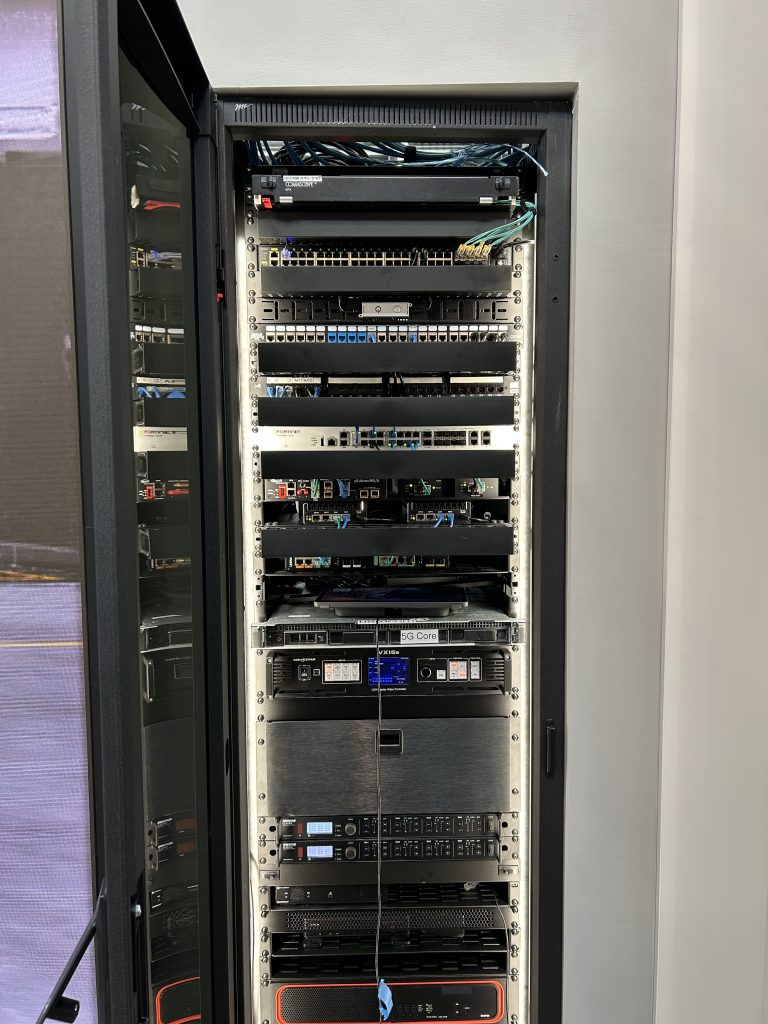
“We both had an interest in MxD. We were both members. We were introduced briefly and started the journey. Over time, we discussed how we could collaborate, and we realized very quickly that there was a definite, reciprocal, mutual, beneficial portent to the relationship with regards to networks,” says Davies.
“Fast-forward a couple of years and today we have fully baked a true go-to-market partnership which aligns our solutions and services as system integration with the entire portfolio of Siemens with regards to their 5G product and service line.” To this partnership, Betacom and Siemens bring their unique areas of expertise to the table and combine them to create something greater than their sum.
For Betacom, it was 5GaaS (5G as a service), and for Siemens, it was their OEM reputation in industrial energy and matured manufacturing accounts. “They [Betacom] have the full 5G stack available to our customers. And we [Siemens] have the end devices or user equipment in a 5G network that, between the two solutions, works quite well together,” says Green.
“The partnership was a great fit to jointly provide our customer base with a 5G solution as we move into the future.”
A look at 5G: the evolution of wireless network technologies
If you have not given the evolution of wireless technology much thought, the terms describing them and their progression over time may be a bit confounding. “5G in general, is the fifth generation of wireless technologies. You may have heard of 4G, and prior to that, 3G. It [5G] allows several enhancements: ultra-reliability and low latency, which means we can get things from Point A to Point B in an extremely fast environment,” explains Green. “It also brings in the capability of much more capacity within the network itself. In the 5G network, you can now have millions more devices in one area, where before, it might have been thousands or tens of thousands of devices.”
But be careful. 5G is not to be confused with home internet or office wi-fi. “When people tell you your home internet is 5G, they are not talking about fifth generation of [wireless] technology. They are talking about 5 gigabytes [of data] that you have access to for throughput. There is an enormous difference between that [5G] and the fifth generation of mobile telephony,” explains Davies. “And that is deliberately used by a lot of internet service providers to market and latch onto this global 5G name everybody thinks is cool.”
5G as it relates to the 3GPP standard, or the 3rd Generation Partnership Project, encompasses several standards organizations that develop protocols for mobile telecommunications. “It is a global standard; it was developed by several countries in Asia, China, the US, Europe, Germany. We all collaborated,” explains Davies.
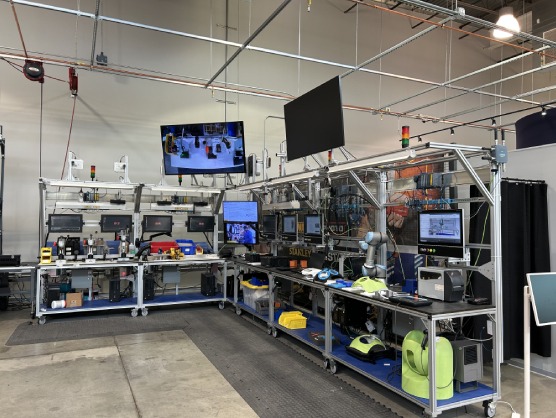
And it continues to develop, which is why, although 5G has been deployed, most countries are still using 4G networks. “You probably have access to 4G networks right now because they are macro networks. You probably have not had [access to 5G networks] because a lot of providers have waited for the [5G] release standard.”
Getting 5G deployed on a macroscale takes time, but it is coming. For now, what is important to note is that Davies and Green are talking about 5G standalone networks, not the public networks that many of us are most familiar with.
“It [Private 5G] is reliant on the same equipment, it is the same standard that supports it, but it is simply a new way of doing things for enterprise,” explains Davies. “There are some companies in Canada today, mining companies, that are using standalone platforms for some of their operations. But it is very few and far between. It is not broadly utilized yet. We are in the very early adoption days.”
Private vs Public 5G Networks are straight forward. Green explains that “In a Private 5G Network, you, the customer, control everything via a partner such as Betacom. All the data that stays on site in the spectrum that you use is yours. It is not touching the public network,” explains Green. “And a Public Network means a mobile network operator such as Verizon, AT&T, Rogers, or Bell, or whatever the case may be. Think of Public as being the carriers, and Private being your data stays on premises; it has options to go other places, but typically, you completely control your data, and it never touches a public network.”
It all revolves around the spectrum
One of the reasons that adoption takes time is because, for wireless technologies, everything revolves around spectrum. Each country has unique spectrum choices and decides whether they get on a macro public network or a standalone private network like the one from Betacom and Siemens. “We use CBRS (Citizens Broadband Radio Service) predominately here in the US. Canada did have a CRBS-like 3.65GHz offering. They have since got rid of that and moved it up closer to the 4GHz band,” says Green.

In the US, for example, the federal government determines what portion of the CBRS will be licensed for commercial use. Davies says, “CBRS is 150 MHz of spectrum that the US federal government released to enterprise, licensed, but released to enterprise so you do not really purchase that. You purchase what we call a ‘SAS License’ from an SAS partner. There are a few countries that have public spectrum available, but [in] most countries, businesses and enterprises purchase the spectrum. And it can be very, very expensive.”
Choosing a SAS or software as a service partner is critical for enterprises to take advantage of the advanced features that private 5G networks can offer. Betacom and Siemens have these bases covered with their complete enterprise-grade solution. Green says, “It comes down to, which manufacturers are you going to invest in? [In] that spectrum for that country? Maybe it comes down to business. Can we get enough of a return on our invested dollars? We look at that all the time [at Siemens], and it is really important,” says Green. “It is certainly not a technology limitation, it is a business and spectrum limitation in most cases, when you come to a standalone or micro-type network.”
How 5G private networks will accelerate manufacturing innovation
A Private 5G or standalone network offers several benefits. For one, it ensures that bandwidth capacity is never shared with the broader network population. Have you ever experienced a slow phone or internet because too many people are transmitting data along the same path? “If you think about why you would want to have a standalone network dedicated to an industrial environment for instance, it is because we do not want any fluctuations in the bandwidth. You want to be able to have that reliable throughput of uplink and downlink so machines can predictably do what they need to do in those environments,” explains Davies.
Manufacturing enterprises need a complete solution that seamlessly enables industry 4.0 applications and the ability to control their data and operations. They need more than just network connectivity. “We can now connect millions of devices,” says Davies. “And they speak to each other in an intelligent way.” He points to enterprises – especially process automation – that use sensors on production lines, cameras, automated ground vehicles, and robots or cobots as being particularly poised to benefit from a Private 5G network – especially now that we are in the dawn of artificial intelligence and machine learning.
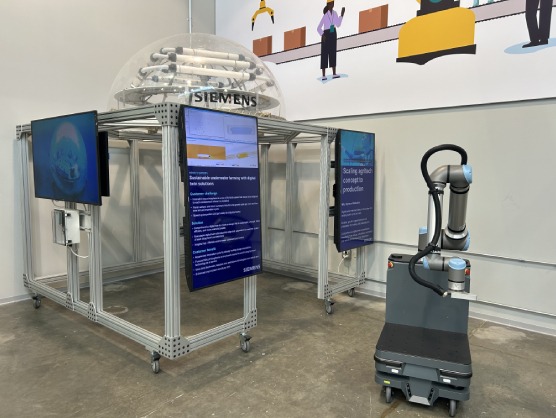
“Think about AI today, and how generative AI is being utilized in those environments to help with process automation. When all those things, can think together as one, that becomes much more powerful than say, one hundred disparate systems trying to do one hundred different tasks in that environment. Everything is moving as one,” says Davies.
“Again, a good reason to have a standalone environment, because they are all along the same connective tissue.” It is not a good practice to have interference from another enterprise with a similar environment – or the public at large.
It is worth noting that the upcoming 3GPP release for 5G will enable millions of devices to be connected on the same network. Davies says that the latest release, 18 or 19 at the time of this article, dictates that 5G will be able to support one million devices per square kilometer. The fourth generation, release 14 or 15, stated it could support ten thousand devices per square kilometer. “You can imagine. That was a quantum leap in the number of devices that can be connected within that environment. But it is important that they are all on the same network. If you start pushing them onto different networks or onto different backbones, they have a much longer route to talk to each other.”
Real-world examples of the private 5G network platform at work
The evolution of 5G has enabled faster communication of devices, increased the number of devices that can communicate simultaneously, and improved the consistency of these processes exponentially. How exactly will this accelerate manufacturing innovation? An example will shed some light on the magnitude of this development. A large, multi-national chemical company recently approached Betacom and Siemens with interest in connecting many of their legacy devices and modernizing at the same time. They had concerns about doing this in a uniform way but had preconceived notions of what was and was not attainable.
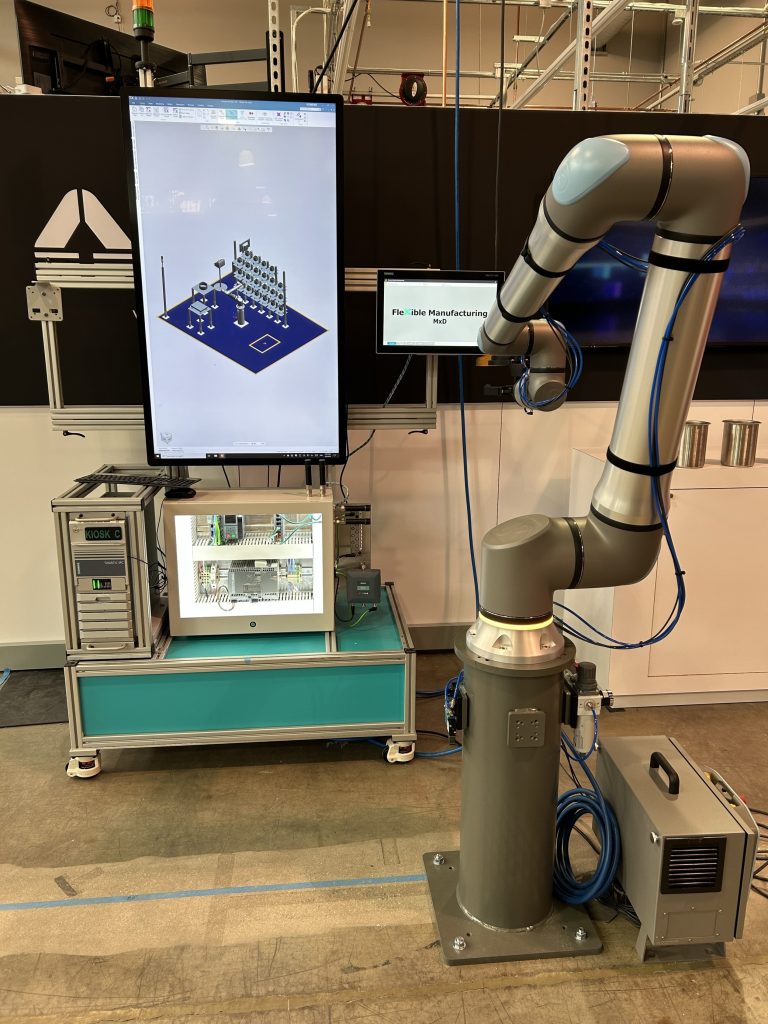
After visiting the Betacom and Siemens network demonstration at MxD, they were able to see firsthand what was possible. That they can connect all these devices and optimize their processes using generative AI without painstakingly adjusting each device individually. “Process automation is huge to manufacturing because it has been their Nirvana for the longest time. They have wanted to be able to do that. To do that, you need to have this platform. And we have not had that until now. It is revolutionary,” says Davies.
Yes, humans will still need to conduct checks and balances to ensure that generative AI has captured the aims of automating the manufacturing processes. But so much of this effort is done for them, and these processes are just beginning maturation as the network platform is still developing.
“It really goes ahead and optimizes the inefficiencies of the plant floor and its automated environment we are using. And again, this will continue to mature over time. What we have right now is truly groundbreaking,” adds Green.
Some manufacturers have spent decades investing in their equipment, processes, and people. They want to be able to get the most out of them, not throw them away.
The private 5G network platform Betacom and Siemens have developed will enable just that. An airport, as another example, used this new platform to solve three problems simultaneously: baggage handling, quicker turnaround for flights, and labour shortage. “We put in a dedicated network, and then we put in place a process and an application of that process to pull all three of those elements together. Those were the KPIs we had, and we met those KPIs. It is a very real innovation that honestly could not have been solved without this technology,” says Davies.
The bottom line: it must be secure
When it comes to wireless technologies, data privacy and security are among the top challenges and priorities for investments in digital transformation. Nobody can see, touch, or hear data, yet we know that it is there – and so do bad actors. Betacom and Siemens take cybersecurity very seriously, which is why they deployed their private 5G network platform at MxD. “We started with MxD because they are the cybersecurity institute,” says Davies. Working there, they built their network on the 3GPP standard 5G and the latest NISC (National Information Solutions Cooperative) protocols, aligned with the DOD.
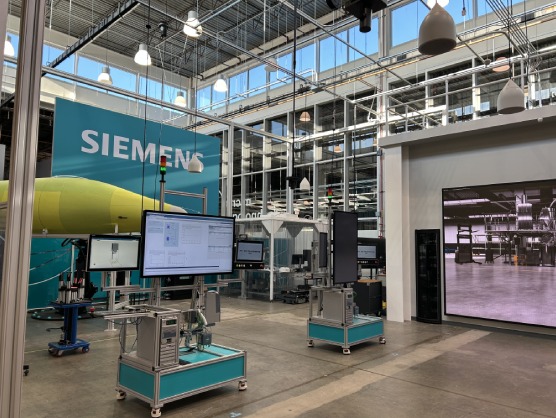
And they built the network to constantly evolve in tandem with threat levels. They brought in third parties to do penetration tests, threat tests, and assess the network and their combined solution to ensure robustness. Green says that at Siemens, there are many facets they consider with respect to cybersecurity.
‘It is not just one thing you need to worry about in cybersecurity. There are many facets of attack points, and ways you need to engineer your systems and networks to be the most secure, robust network possible. We address that in several ways,” adds Green.
Siemens’ firewall, for example, demonstrates the future of secure enterprise connectivity and a truly private 5G network. “Some [enterprises] – certainly the department of defense – do not want data leaving their premises. Period. So, it is very, very important that data capability – what we call ‘mobile edge compute capability’ or ‘mass compute capability’ – is on premise. And that they do not have to leave and go beyond the firewall for anything that they do not want to. They want to control what penetrates the firewall, whether that is north-bound or south-bound traffic,” says Davies.
At the end of the day, it just has to work
Betacom and Siemens are experts in their respective fields, and they understand that not everyone is going to understand, or wants to understand, the complexities of wireless technology. They know that their customers just want a solution they can trust to do what it is supposed to do. Their private 5G network platform will deliver and enable manufacturing innovation.
More Information
If you are interested in learning how they can get your business running more efficiently and with more capabilities, reach out to them today. They have much more to share on the subject and can address your unique challenges.
Related Story
Industry Leaders Unite: Betacom and Siemens Launch Breakthrough Private 5G Network Platform to Accelerate Manufacturing Innovation
In a milestone for manufacturing innovation, Betacom has announced a groundbreaking partnership with Siemens Industries. The companies have deployed a first-of-its-kind private 5G network platform at MxD (Manufacturing x Digital), the National Center for Cybersecurity in Manufacturing in Chicago. The platform is the first complete private wireless network to operate behind a Siemens firewall, demonstrating the future of secure enterprise connectivity.






